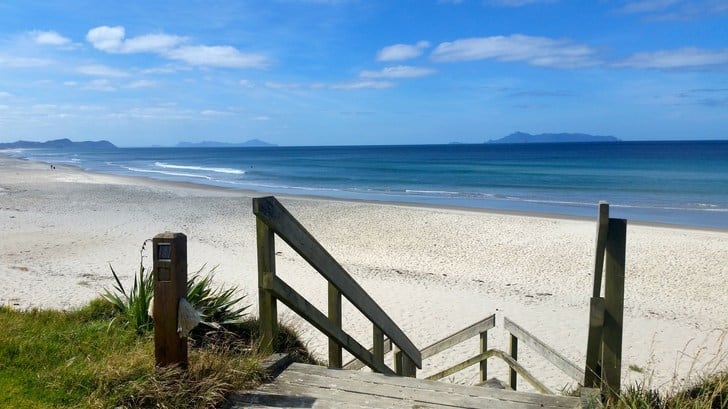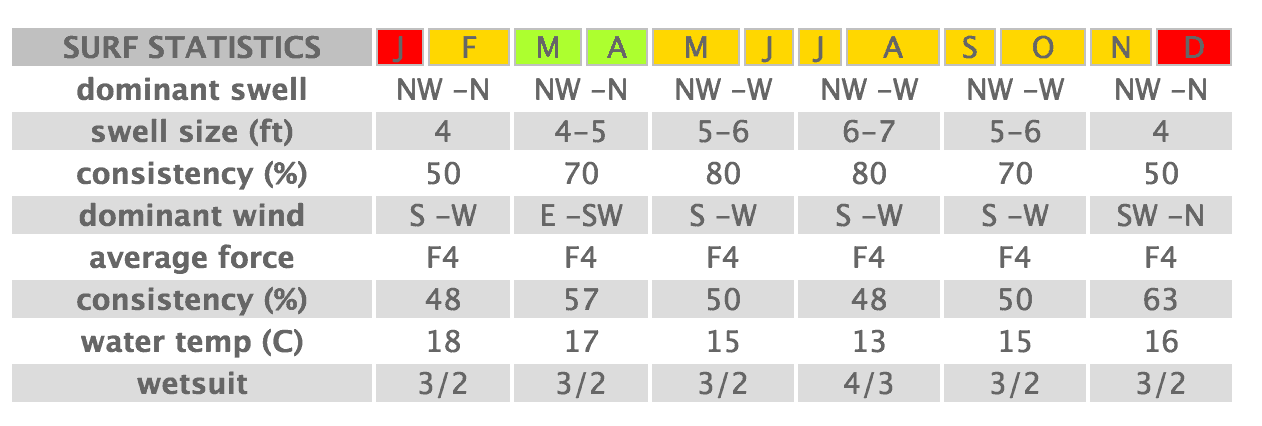New Zealand Surftrip: Chapter 1
Today we´ll talk about the 7 best waves in the region of Taranaki in New Zealand. New Zealand despite being a small country, the size of UK and with a population of 4 million, has an infinite range of possibilities for a New Zealand surftrip.
When to go?
New Zealand has a temperate climate, lots of hours of sun and also precipitation. Due to being in the southern hemisphere, the seasons are flipped compared to us. Their summer is our winter and vice versa. While the kiwis enjoy their summer from December to February, we are chilling in the winter. Something that makes it very attractive to visit during our winter to escape the cold.
In the summer time the temperature is quite agreeable. With temperatures around 20 to 30 degrees, it´s one of the best times to visit this country. It reminded us of where we lived in Basque Country. Since you could have the 4 seasons in one single day.

@enelpico_singlequiver
The fact that the holidays coincide with Christmas for the locals, doesn’t mean that you´ll find a mass of people. New Zealand is a very calm country, even in high season.
Season for waves
Just as the rest of the surf destinations, depending on what month we go there´ll be more or less possibilities of good waves. We advise you to visit our surf season section and check which is the best moment to plan your surftrip.
Could be possible that New Zealand doesn´t have any wave like G-Land, Teahupoo or Clodbrak, but it can boast of having world class spots. Also, it’s one of those places where you can practically surf alone.

Localism?
The New Zealanders are some of the friendliest people in the world. The kiwi surfers aren’t an exception. Of course when you visit their local spots, show respect. Some spots have exclusive access since it´s private. If the land you want to cross is Maori, ask for permission first.
What board do I bring?
It’s weird to find in New Zealand waves taller than 2.5 meters. With a shortboard and another with a lot of volume for those softer days, you´ll fulfill
The waves
In todays article we´ll stay in the North Island and concretely in the area of Taranaki. This semicircle of a coast is the surf mecca. In fact the road that passes through here is called Surf Highway 45. Starting at New Plymouth and descending southwards to Hawera, finding waves is an easy task.

From New Plymouth to Hawera (Taranaki)
Bell Block
From HWY 3 north of New Plymotuh and after 1.5 km through Mangati Road, you´ll get to this reef bottom spot. Despite the long paddle that this needs to get to the peak, the work is worth it. A long left, with lots of differentiated tube sections that break over the reef bottom. It requires certain conditions so as to break and it´s not apt for any level.
Tide: Low
Wind: South
Swell: Southwest
Fitzroy
Fitzroy is the main beach in New Plymouth. With sandy bottom, it offers multiple peaks. It´s one of the beaches where you´ll find most surfers and beach goers. Apt for any level, its proximity to the city, its easy access and surf schools around there make it so that when the waves are working it fills up with people.
Tide: Medium and rising
Wind: East
Swell: Southwest
- @enelpico_singlequiver
- @enelpico_singlequiver
- @enelpico_singlequiver
Waiwhakaiho
To get to this spot you have two options. Either walk from Fitzroy beach or drive through Devon Street East all the way to Clemow Road and park there. The parking is west of the Waiwhakaiho river, and you´ll need to paddle to cross it.
When the best waves are breaking you´ll see a long left and a shorter more vertical right.
Tide: Medium and rising
Wind: Southeast
Swell: Southwest
Kumera Patch
Going south from New Plymouth through Highway 45, you´ll reach Okato. Once here take Kaihihi Road and park at the end of the road. From here you´ll have 20 minutes on foot to get to the beach break. Once in the water, a 100-200 meter paddle to get to the peak, and all this will be worth it. Kumera Patch is a long left that works like a roller coaster.
With swell that go from 1.2 meters to 3.6 meters is when it´s at its maximum splendor. It works with any type of tide and is a wave apt for intermediate level.
Tide: All
Wind: Southeast
Swell: Southwest
Rocky Lefts
From New Plymouth through Highway 45 take Paora Road. This will take you directly to the spot. We recommend you observe the locals first since this wave has its trick. With a vertical downward slope that takes you directly to the tube, this left is apt only for surfers with a certain level.
Tide: High
Wind: Southeast
Swell: Southwest
- @Michael J Photography
- @Michael J Photography
- @Michael J Photography
Rocky Rights
From Rocky Lefts, in the curve of Paora Road, you can enter a trail that will take you to this powerful right, equal to its left sister, breaks over a rocky bottom. A wave that is very fast, only apt for experienced surfers. This right functions with swell from southwest and northwest. It holds with waves up to 3 meters
Tide: Medium
Wind: Northeast
Swell: Southwest
- @Michael J Photography
- @Michael J Photography
- @Michael J Photography
Stent Road
Southward from New Plymouth through Highway 45, take Stent Road on your right hand side. Take care because the sign with the name of the street can be faded or it can not even be there. The local surfers usually take it as a souvenir.
It´s one of the best waves in Taranaki. A long right with various sections that break over a rocky bottom. When it works it´s one of the most popular places to go to by surfers.

Tide: All
Wind: East
Swell: Southwest
Thing to do
The region of Taranaki offers a great variety of activities to do. The majority of people that visit this place come for the surf or the volcanic cone in Mount Taranaki. 2518 meters tall, it´s like a magnet for any who contemplates it. More than 350 years ago since its last eruption. What more, even in summer there can be snow on its peak. Due to its accessibility, Mount Taranaki is the most summited in New Zealand. Even so, it has a darker side, since all it´s as dangerous as it is beautiful. It has taken more than seven lives and its microclimate can change almost instantly. Something to take care of before going up.
Apart from the beaches with volcanic sand and mount Tranaki, we´ll recommend a series of activities to do while you visit:
- Trekking route through Egmont National Park
- Kayak or canoe route in Whanhanui National Park. The trajectory is known as “Whanganui Journey” it’s the most popular and is part of the great routes network in the country
- Traverse Surf Highway 45 that goes from New Plymouth to Hawera. 105 km of beach with black sand and multiple spots.
- Visit New Plymouth. It’s the biggest city in the region of Taranaki. The city has a lot of life and culture. We recommend you do the Coastal Walkway, 11 km that go from Bell Block to Port Taranaki and goes through Te Rewa Rewa bridge. A good way to do this route is by bike.
- Visit Oakura. This small town with 1380 inhabitants has a long beach that also attracts a lot of surfers.
- @enelpico_singlequiver
- @enelpico_singlequiver
- @enelpico_singlequiver
- @enelpico_singlequiver
- @enelpico_singlequiver
- @enelpico_singlequiver
If you liked this post and want more information over how to complete your surftrip in New Zealand, stay tuned to our Surftrips section or subscribe to our newsletter to receive the latest.
In the next chapter we will visit the region of Waikato. Home of one of the most popular surf destinations in New Zealand: Raglan. Considered also one of the longest waves in the world.


















